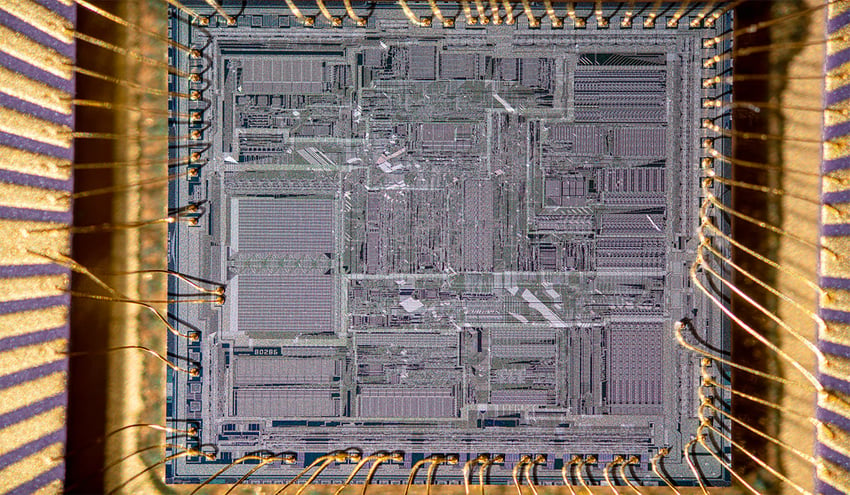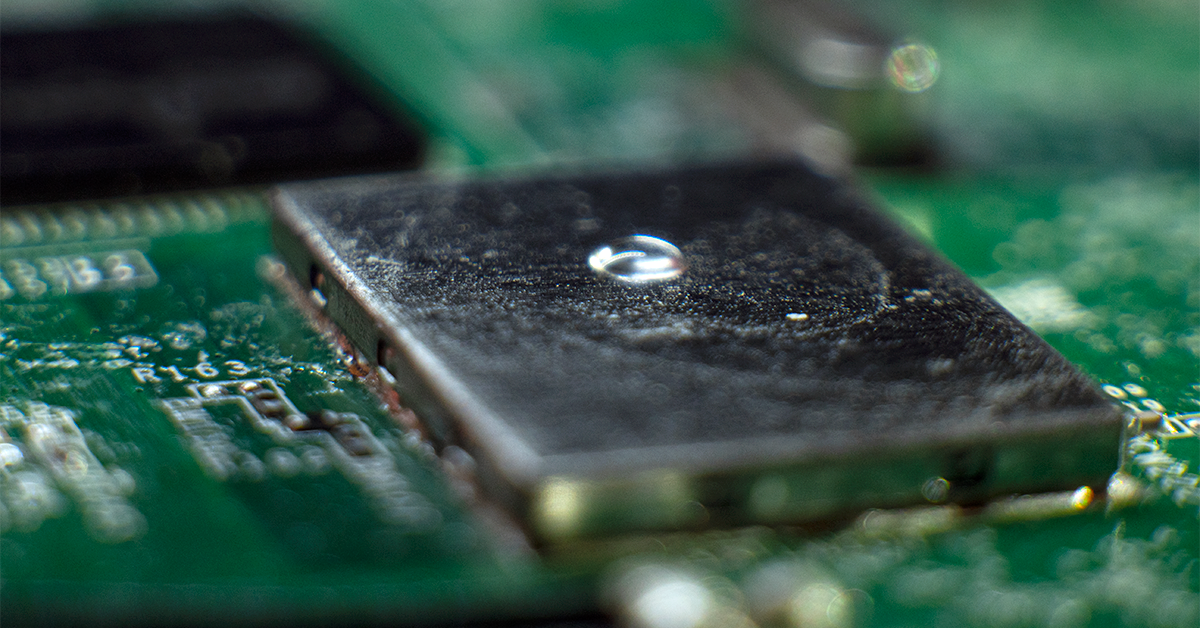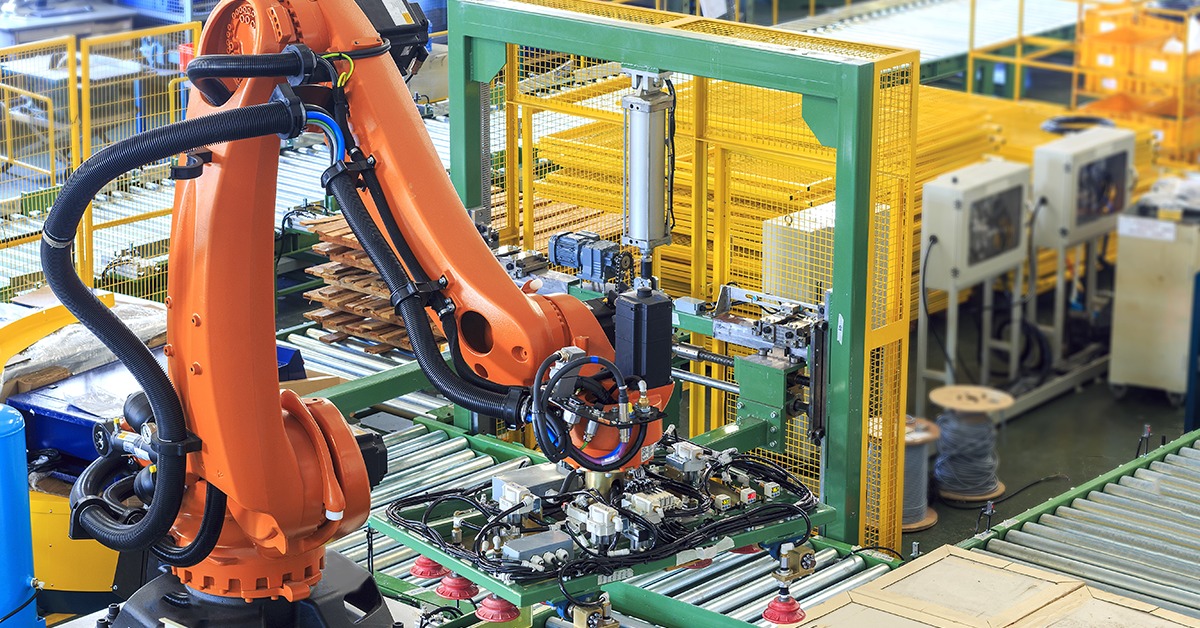Wire bonding and sintering are critical processes involved in the manufacture of a majority of electronic devices. These processes are used to connect silicon chips, integrated circuits (ICs), and electrical components to their housings and boards.
Wire bonding has become one of the most widespread methods in small device manufacturing due to its cost-effectiveness and reliability. Initial iterations of wire bonding began in the mid-twentieth century when it was used to connect early silicon semiconductor devices to their ceramic packaging. These wire bonds, typically wedge bonded, were critical in building early prototypes and paving the way for creating electronic technology that can be as widespread as it has become.
In today’s manufacturing world, wire bonding is extremely versatile and can be used on materials such as gold, silver, aluminum, and copper. Many wire bonding machines can be dialed in and calibrated for different applications and can be manually operated or highly automated. In fact, wire bonding is one of the highest automated processes in electronics manufacturing due to its high repeatability and quality requirements.
The electrical connections made by these wires make up the delicate and powerful nervous system that actuates the devices these packages are assembled into. The reliability of any product that incorporates electronic devices is directly linked to the effectiveness of these wire bonds.
There are several strength and performance tests used to meet IPC manufacturing standards and ISO requirements. But when manufacturers can employ non-destructive, predictive analytical inspections, they can reduce rework and time-intensive manual inspections while simultaneously increasing throughput and reliability.
Surface quality and the impact of cleanliness need to be measured, controlled, and monitored through rapid, surface-sensitive inspections that accurately indicate if surfaces are free of contaminants that hinder adhesion. The best way to create a predictive cleaning, adhesion, and assembly process is to use data that makes process quality control easy and actionable.
Rethink your adhesion manufacturing processes with Surface Intelligence.
Wire Bonding Process and Die Attach Issues
Wire bonding most commonly appears in one of three process types:
- Wedge bonding involves a wedge-shaped tool to deposit the wire on the contact pads, then bonding the wire to the initial pad, pulling the wire out to the destination pad, and bonding the wire to it. Finally, it quickly pulls away from the pad tearing the wire and leaving a small tail for the next bond.
- Ball bonding is one of the most common techniques in semiconductor device manufacturing. It involves two deposition heads pressing out a molten wire onto a pad, and due to the surface tension of the metal, the wire forms a ball on the surface. From there, the wire is extended from the molten ball and carried to the next pad, and then the tool pinches off the wire.
- Compliant bonding is a much more niche method, reserved for only gold-gold bonds. Compliant bonding relies on heat and pressure to diffuse like particles between the contacts of the pad and the wire, thus creating a bond. Compliant bonding is also a form of steady-state bonding, which refers to how the bond process occurs at much lower temperatures than the melting point of the metals.
Die attach and surface mount technology (SMT) processes often involve adhesively bonding the chips and components to the PCB, and once curing has finished and they are physically attached to the surface, the silicon chips will be wire bonded to complete the electrical connections. Following this, there is an encapsulation to protect the components from moisture and other environmental hazards.
To learn more about how to control surface sensitive processes through proactive data collection, download our free eBook: Checklist: Adhesion Failure Root-Cause Analysis for Manufacturers
Many SMT operations are fairly complex and require hybrid versions of adhesion processes to ensure each component is attached and housed safely and securely on the board. Some SMT processes include thermosonic and ultrasonic methods using vibrations and controlled temperatures to form bonds. More common methods include solder ball die attach using metal balls that bond to the chips during a reflow and curing process.
All of these processes are interrelated and reliant upon clean surfaces so that solder can flow, adhesives will wet out, and strong bonds can be formed. If there are not production-level tests in place that demonstrate these characteristics, then the bonds are vulnerable to failure.
It is also important to remember that the companies who manufacture the SMT components and the companies who assemble the final packages are often not the same company. Components can change hands a couple of times before they are wire bonded, and the cleanliness across the entire supply chain needs to be verified to be within established tolerances so that inconsistent part quality doesn’t disrupt downstream processes.
High-Reliability Electronics Manufacturing Depends on Cleanliness
Millions upon millions of electronic devices are produced each year, and every IC, resistor, and capacitor must withstand the test of time no matter what hazardous environments they are used in. Reliability is always at the forefront of device manufacturing because more and more electronics are being used in hi-rel applications like defense, medical, and communications.
Wire bonding, as in any adhesion application, can be dramatically impacted by surface contamination. Contaminants like oxides on the metal surfaces and hydrocarbons can reduce the strength of the wire bond and lead to long-term failures on the board.
When thinking about this kind of contamination, it’s important to think about the surface in a very specific way. The surface that matters in adhesion processes consists of the top 1-5 molecular layers of the material. If contaminants like oxides and hydrocarbons are present within these layers, they can undercut bonding procedures, and most testing techniques will never even detect them.
Using Verified Surface Treatment to Increase Adhesion Reliability
The fact that failures still occur even after cleanliness tests (such as SIR and ROSE) have passed has caused manufacturers to realize the need to change the chemical characteristics of their surfaces by plasma treating the semiconductors and chips prior to wire bonding. By doing so, they remove much of the organic contaminants and activate the metal surface by creating high-energy molecules ready for wire bonding.
A common test used in evaluating the quality of wire bonds is the pull force test. The pull force test measures how much force, measured in Newtons, it takes for the bond to fail.
In a study conducted by The Institute of Physics, metal surfaces were compared at varying levels of surface contaminants. They also studied different metal/metal bonds using gold, nickel, silver-plated copper, and aluminum. It was found that when the surfaces of the metal pads were sufficiently cleaned through plasma treatment, the bonds reported much higher results from the pull force test, as much as 300% when compared to contaminated pads.
But it’s not enough to just treat the surface and hope it worked. As the old adage instructs, “you can’t manage what you don’t measure.” It is vitally important to measure exactly what molecular changes are occurring during plasma treatment and other cleaning steps. Since we’re talking about a highly delicate surface and high precision processes, without this process check, there is no way to know if the surface is under-treated (e.g. some contaminants still remain on the surface) or over-treated (e.g. the surface has volatilized and is damaged or etched by the exposure).
The best method for surface quality evaluation is in-line contact angle measurements. This Materials Science-based technique is sensitive to those vanishingly small molecular layers and the changes that occur at that level. Those changes have the ability to make or break adhesion processes that ensure electric connections between components on PCB remain intact.
The contact angle formed by a tiny drop of liquid on a surface provides a quantitative value that precisely indicates the readiness of the surface for adhesion. Correlating the number given by a contact angle measurement to the quality of surfaces gives manufacturers the confidence they need to validate each and every surface preparation process and reliably predict adhesion outcomes.
Optimize the power of next-gen connectivity with data & surface intelligence.
How Can We Push the Limits of Modern Manufacturing
The modern manufacturing world changes every day with the advent of Industry 4.0, continuously pushing the boundaries of how we build products. This revolution relies on data-driven processes that can adapt to the ever-changing production environment and close the production loop. Manufacturers need the proper equipment to know how to act as opposed to react.
Contamination on the surface of electronic parts can be catastrophic for wire bonding and, if not dealt with quickly, can lead to product recalls and plant shutdowns. Even the smallest of changes in these incredibly sensitive processes can lead to massive headaches downstream.
By monitoring the process using surface-sensitive inspection tools, manufacturers can build a predictive system to better prevent these issues. Providing clear, objective data is at the heart of all Industry 4.0 innovations and can only be achieved using the best tools out there.
To learn more about how to control surface-sensitive processes through proactive data collection, download our free guide to conducting holistic root cause analysis. Download the Checklist: Adhesion Failure Root-Cause Analysis for Manufacturers eBook. By the end of the document, you will have a rich understanding of how to know for certain where your adhesion problems are deriving from and how to prevent them.





